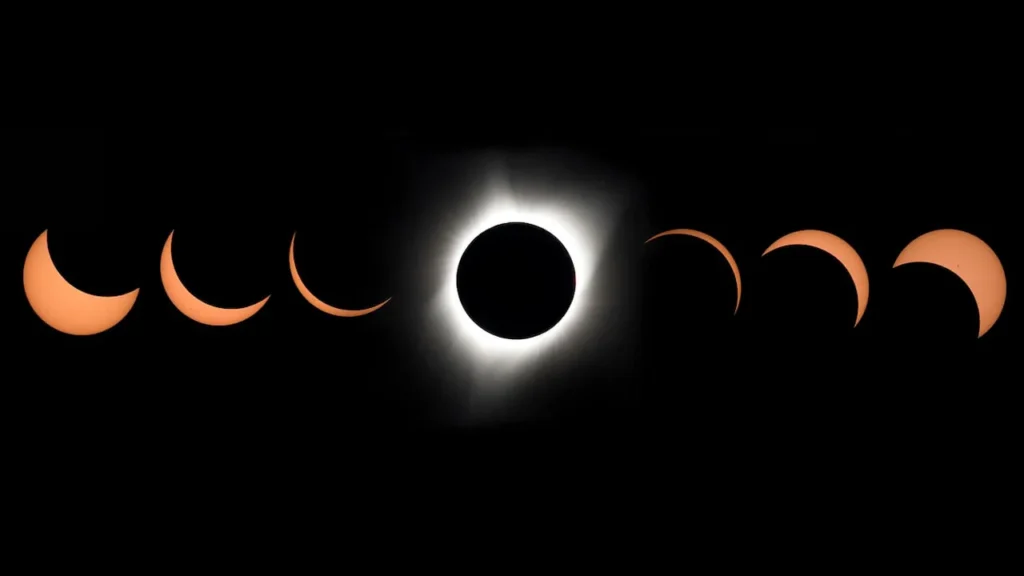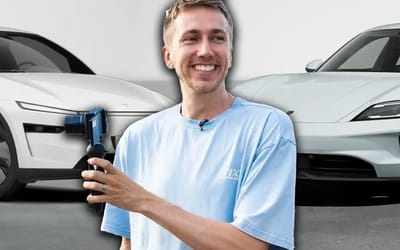NASA explains what will happen to your phone if you try to photograph the solar eclipse
- Most people know they shouldn’t look directly at the eclipse with their naked eye, it turns out there are similar rules for cellphone cameras
- NASA has advised on how to photograph the solar eclipse without damaging your smartphone.
- The solar eclipse is happening today, Monday, 8 April
Published on Apr 08, 2024 at 7:14 PM (UTC+4)
by Amelia Jean Hershman-Jones
Last updated on Apr 10, 2024 at 3:14 PM (UTC+4)
Edited by
Tom Wood
NASA has advised on what will happen if you try to capture the solar eclipse on your phone – and how you can do it without damaging your phone.
There are several precautions to take with your smartphone when the solar event happens later today (Monday, 8 April).
While most people know they shouldn’t look directly at the eclipse with their naked eye, turns out there are similar rules for cellphone cameras.
READ MORE! NASA spacecraft to ‘touch’ the sun at staggering speed in 2024
NASA posted advice about the total solar eclipse on its X account.
“We asked our @NASAHQPhoto team, and the answer is yes, the phone sensor could be damaged just like any other image sensor if it’s pointed directly at the sun,” it said.
“This is especially true if you’re using any sort of magnifying lens attachment on the phone.
“You would need to utilize the proper filters just like on any other camera.”
However, if you’re really keen to capture the celestial moment on film on your smartphone, it isn’t totally out of the question.
“The best practice would be to hold a pair of eclipse glasses in front of your phone’s lenses when photographing the sun at any point other than totality,” they added.
NASA also posted a video with advice on their website.
In addition to using eclipse glasses to filter the image, NASA advises capturing the image without touching your camera.
To do this, stabilizing your camera and using a delayed shutter release time is recommended.
Looking around you, rather than up is something you might never have thought of.
“As the Moon slips in front of the sun, the landscape will be bathed in eerie lighting and shadows,” NASA explains.
“As light filters through the overlapping leaves of trees, it creates natural pinholes that project miniature eclipse replicas on the ground.
“Anywhere you can point your camera can yield exceptional imagery, so be sure to compose some wide-angle photos that can capture your eclipse experience.”
And, if you’re interested in another POV, an astronaut has revealed what a solar eclipse looks like from space.
Delta is also offering a path-of-totality flight to watch the solar eclipse at 30,000 ft.
Back on Earth, NASA also advised practicing with your camera’s manual controls ahead of time so you’re ready when the time comes.

NASA’s safety tips remind us that ‘it is not safe to look directly at the sun without specialized eye protection for solar viewing’.
View the sun through eclipse glasses or a handheld solar viewer during the partial eclipse both before and after totality.
When you can no longer see any part of the sun through eclipse glasses or a solar viewer – and the Moon is completely obscuring it – you can view the eclipse directly without proper eye protection.
You might still want to keep the glasses on though, just to be safe.
If not, as soon as a little bit of the bright sun reappears put your eclipse glasses back on immediately or use a handheld solar viewer to look at the sun.
Happy viewing.
Some images in this article were generated using AI
DISCOVER SBX CARS: The global premium car auction platform powered by Supercar Blondie

London-based Amelia cut her journalistic teeth covering all things lifestyle, wellness, and luxury in the UK capital. Fast-forward a decade and the senior content writer and editor has put pen to paper for glossy magazines, busy newsrooms, and coveted brands. When her OOO is on from writing about cars and heading up on-site SEO you can find her spending quality time with her young family, in the gym, or exploring the city she loves.




